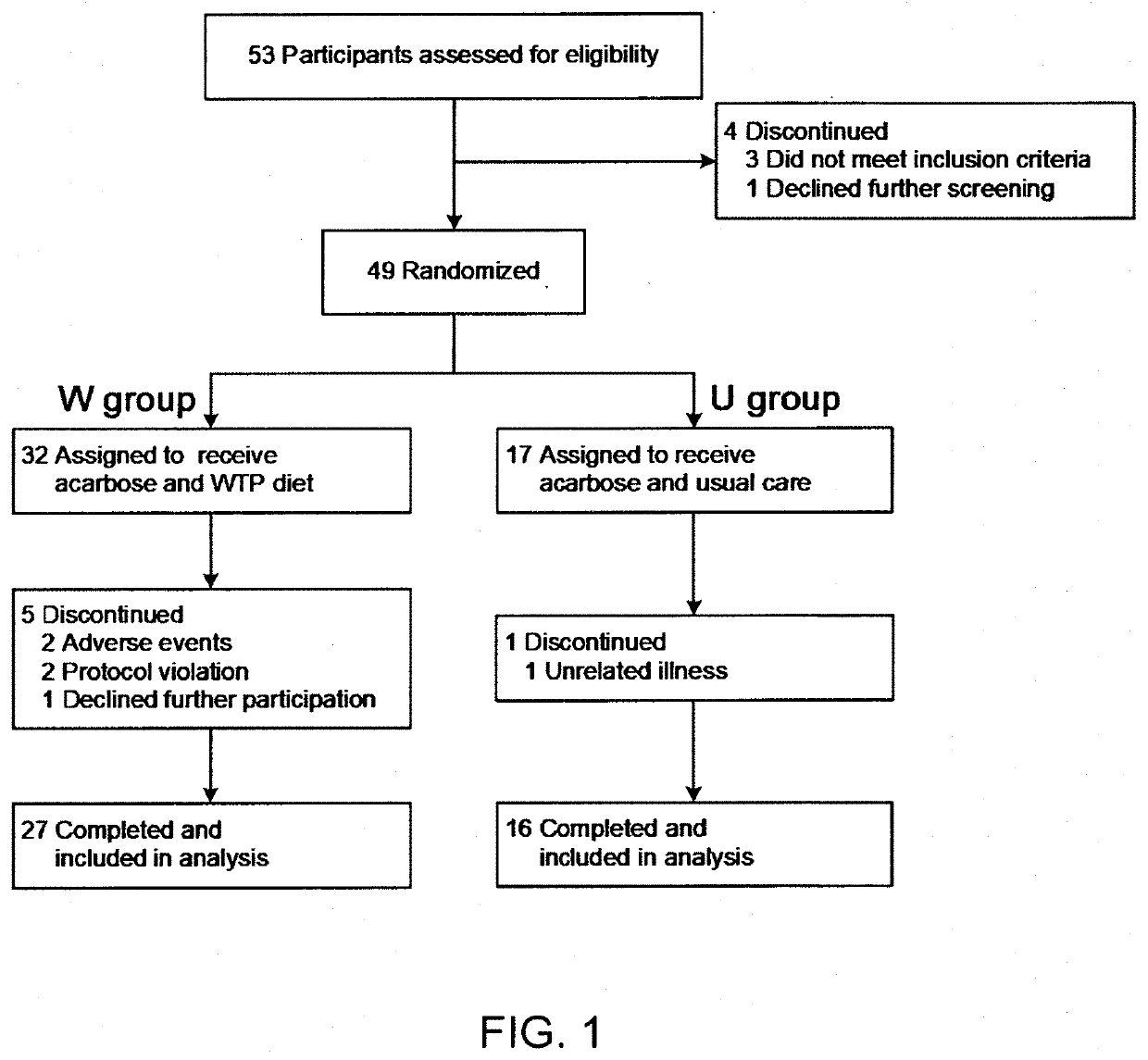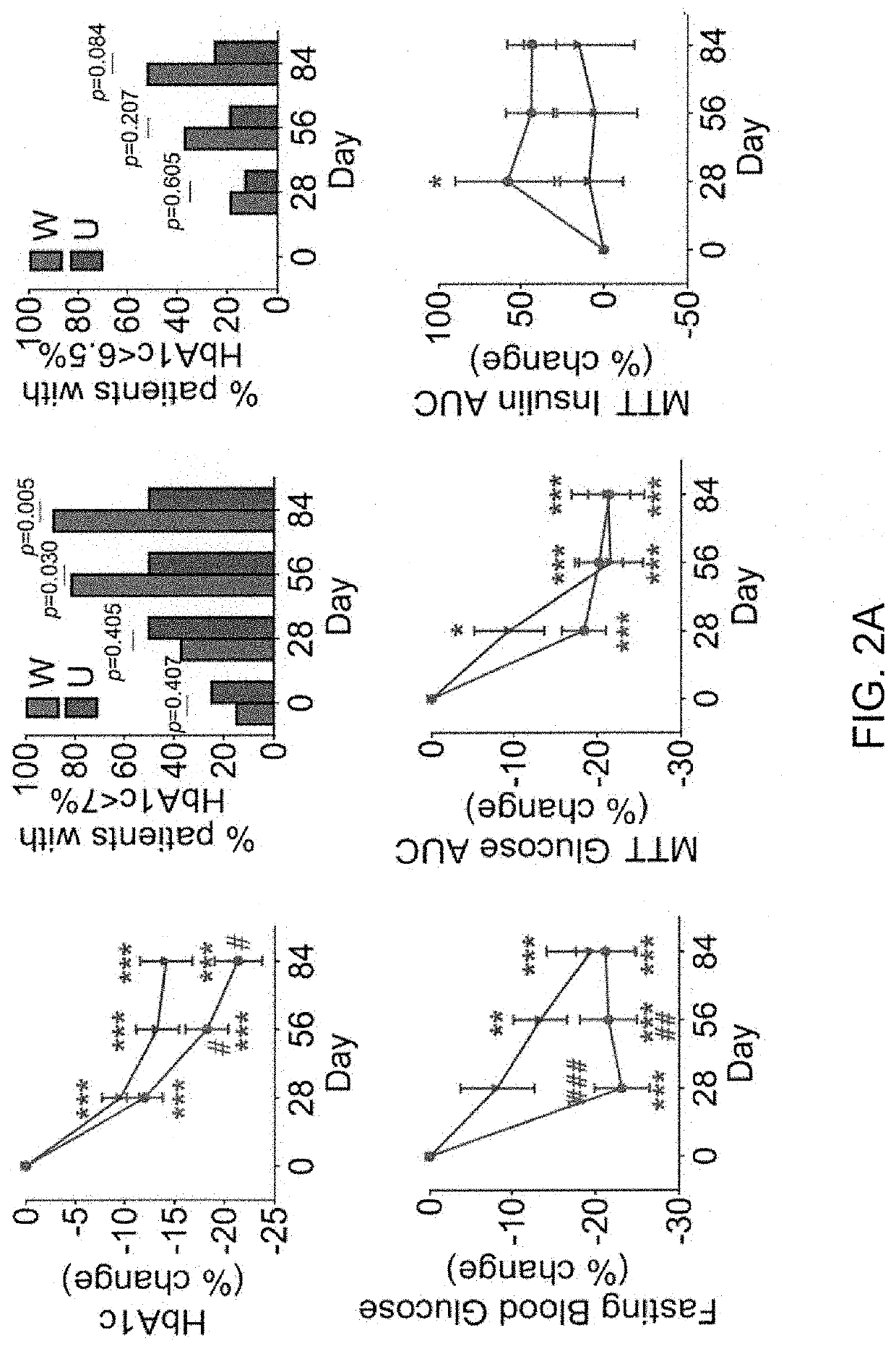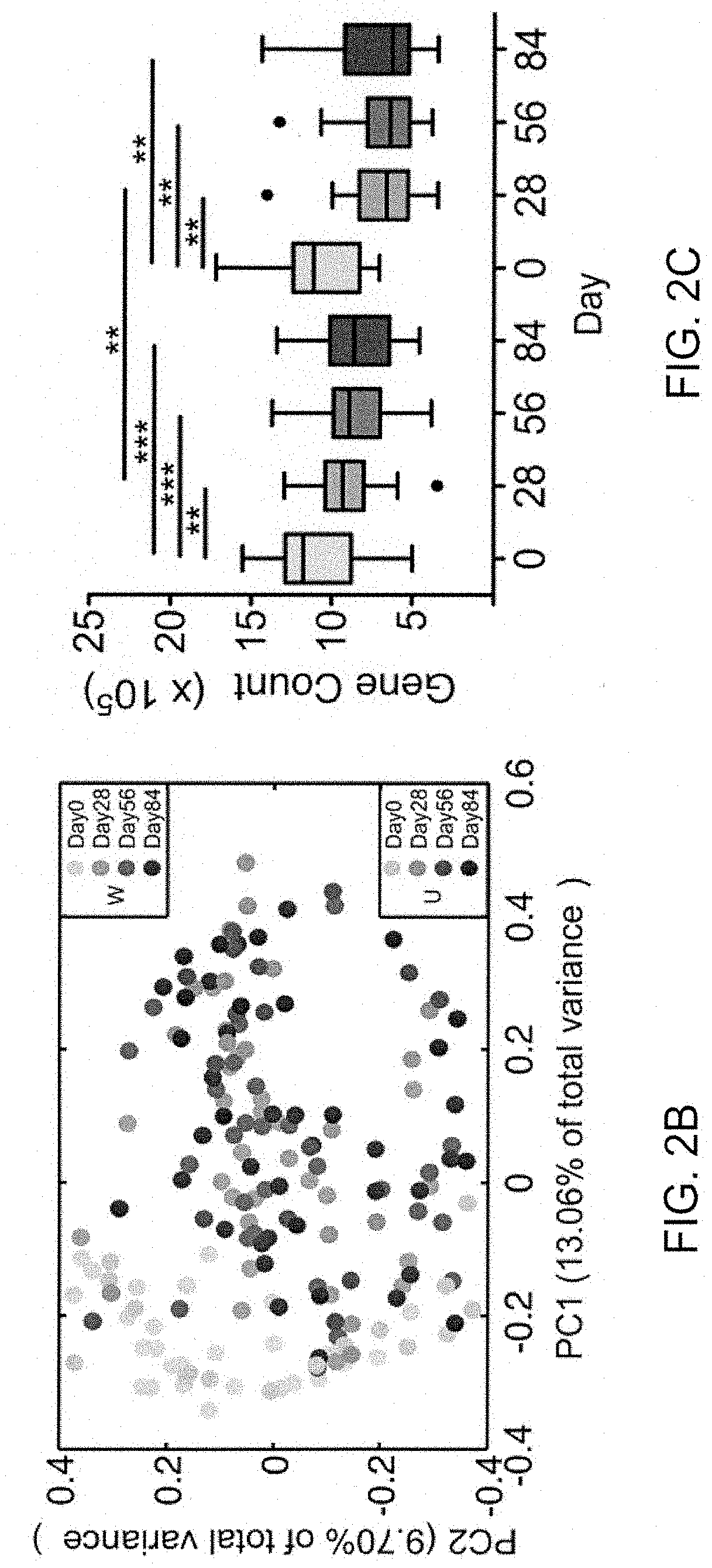Biomarkers for type 2 diabetes mellitus and use thereof
a biomarker and type 2 diabetes technology, applied in the field of biomarkers for type 2 diabetes mellitus, can solve the problems of difficult identification of esps for scfa production to ameliorate t2dm, and achieve the effect of efficient, accurate and patient-friendly characterization of t2d
- Summary
- Abstract
- Description
- Claims
- Application Information
AI Technical Summary
Benefits of technology
Problems solved by technology
Method used
Image
Examples
example 1
A High-Fibre Intervention Significantly Improves Bioclinical Parameters in Patients with T2DM
[0125]Almost all bioclinical parameters improved in both the W and U groups during the first month of the intervention. The level of glycated haemoglobin (HbAlc), the primary outcome in the current clinical trial, decreased significantly over time from baseline levels in both groups (FIG. 2A). By Day 84, reductions in HbAlc were greater in the W group than in the U group. At the end of the intervention (Day 84), the adequate-glycaemic-control rate (the proportion in the cohort with HbAlc <7%) was significantly higher in the W group than in the U group (88.9% versus 50.5%, P=0.005). The more stringent goal-achievement rate (the proportion of the cohort with HbAlc <6.5%) showed a similar (although non-significant) trend (51.9% versus 25.0%, P=0.084). Patients in the W group also lost a significantly greater percentage of body weight and demonstrated significantly improved lipid profiles and in...
example 2
High-Fibre Interventions Modulate the Global Structure of the Gut Microbiota in Patients with T2DM
[0126]Shotgun metagenomic sequencing was performed on 172 faecal samples collected at 4 time points (Days 0, 28, 56 and 84). From a non-redundant gene catalogue of 4,893,833 microbial genes, 422 co-abundance gene groups (CAGs; binned using a Canopy-based algorithm (19)) were identified as distinct bacterial genomes. Based on Bray-Curtis distances from the 422 bacterial CAGs, the overall structure of the gut microbiota (as indicated by principal co-ordinate analysis) showed significant alteration from Day 0 to Day 28 in both groups with no further changes afterwards (FIG. 2B). At the end of the intervention (Day 84), significant difference (P=0.0056) in the gut microbial structure between the W and U groups reflected a distinct modulatory effect of the WTP diet on the gut microbiota. There was a notable reduction in gene richness (the number of genes identified per sample) in both groups...
example 3
Transplantation Indicates a Causal Contribution of the Gut Microbiota to Alleviation of T2DM
[0127]To establish causality between diet-altered gut microbiota and improvements in glucose metabolism, the pre- and post-intervention (Day 0 and Day 84 respectively) gut microbiota from participants in the W and U groups were transplanted into germ-free C57BL / 6J mice. After 14 days of transplantation, mice receiving the post-intervention microbiota from the W group had a significantly lower body weight (FIG. 3A). These mice also had the lowest fasting and postprandial blood glucose when compared to those that were transplanted with the pre-intervention microbiota from the W group or the microbiota from the U group at either time points, an effect appeared to be associated with fasting insulin levels (FIG. 3B-D). The transferable effect of our interventions via microbial transplantation confirms that the high dietary fibre-induced changes in the gut microbiota causatively contribute to impro...
PUM
| Property | Measurement | Unit |
|---|---|---|
| wet weight | aaaaa | aaaaa |
| size | aaaaa | aaaaa |
| length | aaaaa | aaaaa |
Abstract
Description
Claims
Application Information
 Login to View More
Login to View More - R&D
- Intellectual Property
- Life Sciences
- Materials
- Tech Scout
- Unparalleled Data Quality
- Higher Quality Content
- 60% Fewer Hallucinations
Browse by: Latest US Patents, China's latest patents, Technical Efficacy Thesaurus, Application Domain, Technology Topic, Popular Technical Reports.
© 2025 PatSnap. All rights reserved.Legal|Privacy policy|Modern Slavery Act Transparency Statement|Sitemap|About US| Contact US: help@patsnap.com



